Technology and Investment
Vol.3 No.2(2012), Article ID:19389,6 pages DOI:10.4236/ti.2012.32010
Research on Stratified Cluster Evaluation of Enterprise Green Technology Innovation Based on the Rough Set
School of Economic and Management, University of Electronic Science and Technology of China, Chengdu, China
Email: xiejianmin@swust.edu.cn
Received January 15, 2012; revised February 14, 2012; accepted February 21, 2012
Keywords: Green Technology Innovation; Innovation Environment; Index System; Rough Set
ABSTRACT
This paper analyzes the impact of corporate green technological innovation which is based on internal and external environmental factors, using hierarchical clustering approach to building a multi-index system. Evaluation index system for the various environmental factors inherent in the ambiguity, the use of rough set theory set a new business model for green technology innovation and environmental assessment. The model overcomes the traditional rough set model calculation bottleneck. Empirical studies demonstrate that the proposed index system and evaluation model have effectiveness, relevance and objectivity.
1. Introduction
In recent years the human facing many development problems, such as the environmental pollution, the abnormal climate change, the insufficient supply of resources and so on. This problem is not only restricting development of economic and social sustainable, but also endangering the human beings survival and development. To face with the deepening green consumer spending outlook, companies must change the extensive production and management of the high consumption, low efficiency and heavy pollution into the low-cost, high efficiency, less pollution-intensive production methods, that can be improve resource efficiency and production efficiency. The key to achieve this transformation is the implementation of green technology innovation. To successful implement the green technology innovation, companies needed a good environment, the objective evaluation of internal and external environment, which will help companies, find and create a good environment for green innovation [1].
The green technology innovation is the general definition of technology, process and product innovation which must follow eco-economy principles and laws of ecology, conserve resources and energy, and avoid, eliminate or reduce environmental pollution and ecological damage. Academics have been studied on the green technical innovation from different angles. Vicki Norberg-Bohm (1999) discussed how to design public policy mechanisms to promote the hinder innovation in pollution control technology, and set up six policy design standards to promote the green technology innovation [2]. Yushan Chen (2006) explored the business green innovation for a positive impact on the performance of its competitive advantage. The study found that the development of enterprises can be strengthened by the green technology innovation; businesses should recognize the value of green innovation and the correct positioning [3]. Yushan Chen (2008) also verified the core capabilities and the image of green innovation and environmental performance was positively correlated, and confirmed the development of enterprises can be enhanced by the image of green innovation building, the green core competencies investment [4].
It is a late start of China’s green technology innovation. In recent years, China primarily focused on the meaning of green innovation and green technology innovation barriers and countermeasures research. In the terms of green technology innovation Meaning, Ping Li (2001) compared the green technology innovation with the traditional technological innovation. As a result, he pointed out that technological innovation from the traditional into the green is the only way to achieve sustainable development [5]. Ling Yuan (2000) described the content and development Status of the green technology and green technology innovation, it has been defined the concept of green technology innovation from the economic point of view [6]. In research for the enterprise level, Huafeng Yang (2005) explored the enterprise to promote green technology innovation barriers, made for the circular economy to carry out business strategies and innovative green technology [7]. Jun Jiao (2011) analyzed the green value network which consisted with the business and stakeholders, proposed the basic theoretical framework which based on the relationship between the green strategic alliance and the green innovation, and elaborated on the elements of green technology innovation and operational mechanisms [8]. Through the investigation and empirical research, Qinghua Zhu (2011) proposed the Chinese telecommunications equipment manufacturing industry to implement eco-design practice dynamic model, the results showed that: the external power for telecom equipment manufacturers had a positive effect on ecodesign practice [9].
Looking at the domestic and foreign innovation in green technology research, the academia made some research on the practical aspects and its content, but there were few researches on internal and external business environment in green technology innovation. To evaluate the Green technology innovation in the enterprise, the fuzzy comprehensive evaluation method was mostly used [10]. This method required pre-built membership functions, the build process more relied on experience, which also affected the objectivity of the environmental assessment. In-depth analysis of enterprise green technical innovation and external environmental influences, the new evaluation model is established by using the rough set theory [11], as to the internal and external environment of uncertainty, building a hierarchical clustering enterprise evaluation index system. Rough sets are different from the AHP [12], fuzzy sets [13] and the evidence theory based on probability [14], and it does not need the probability distribution of membership functions such as prior knowledge, so the innovation in green technology is more objective evaluation of the environment. Finally, through the empirical research, this paper verifies the validity of index system and evaluation model.
2. The Enterprise Evaluation Index System of Green Technology Innovation
The innovation environment was a key factor to determine whether the green technology innovation can be success or not, to impact and restrict the quality of the of the green technology innovation business activities. The business green technology innovation environment was composed of the people who impacted the green technology innovation, organizations and other elements. The business green technology innovation environment changed the new technology into the network systems which could promote the business green power by the mutual cooperation of Various actors and role [15]. This paper analyzes the impact of two levels of innovation in green technology enterprise environmental factors from internal environment and external environment, using hierarchical clustering approach to building enterprise green technical innovation evaluation system shown in Table 1.
3. Evaluation Model
3.1. Model Related Definition
A decision system  can be formally expressed as
can be formally expressed as
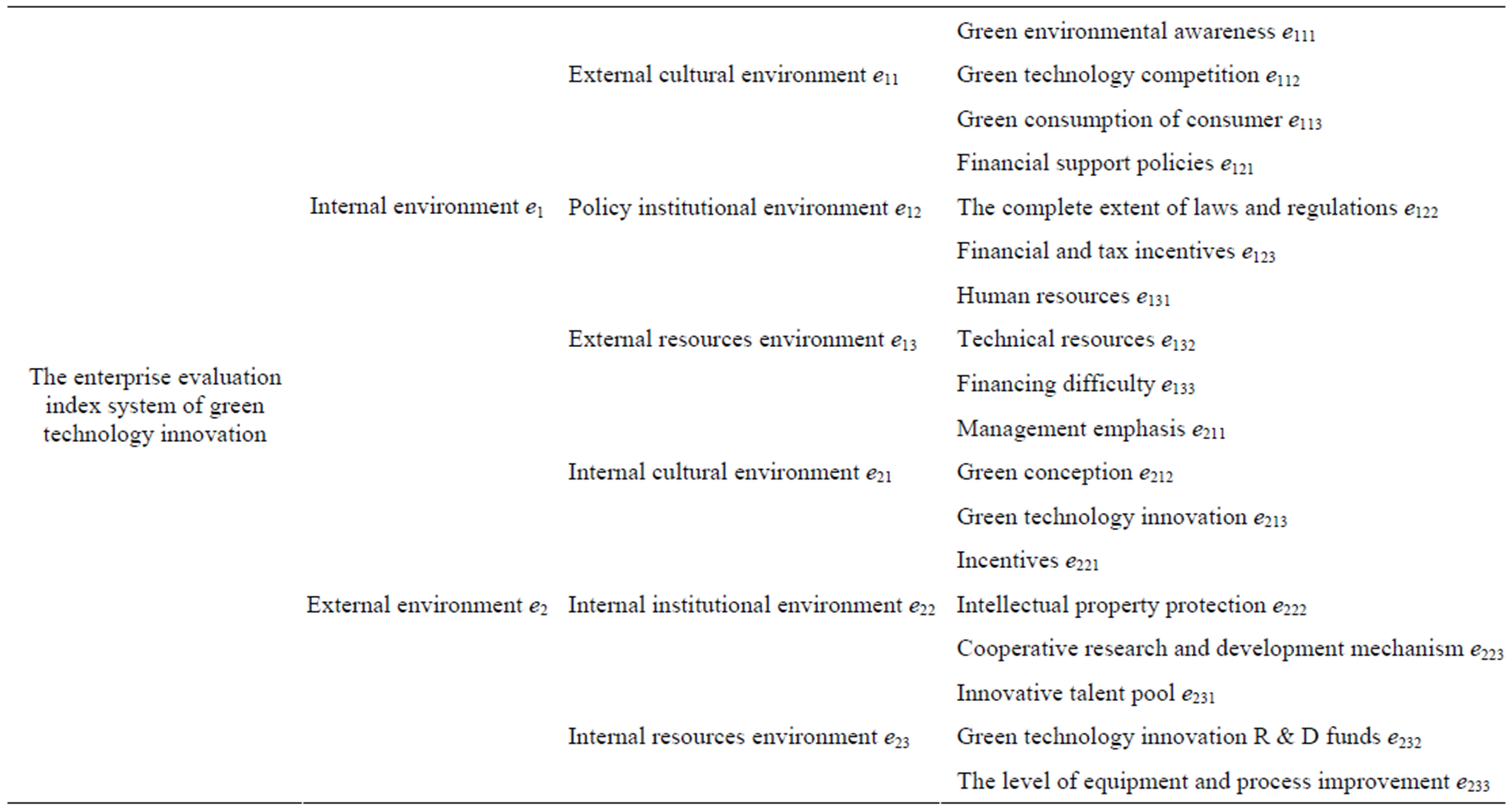
Table 1. The enterprise evaluation index system of green technology innovation.
quaternion:
 (1)
(1)
 is a finite non-empty collection of objects, also known as the domain,
is a finite non-empty collection of objects, also known as the domain,  is a finite non-empty set of attributes.
is a finite non-empty set of attributes.  indicates that the property
indicates that the property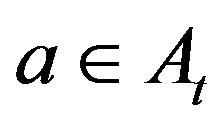 , the range of attribute values, that attribute
, the range of attribute values, that attribute  of the range,
of the range,  is an information function. If
is an information function. If , then
, then 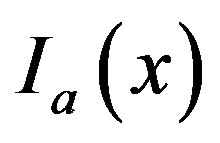 shows the object
shows the object  of property value on property
of property value on property .
.
Write  as a formula for decision-making
as a formula for decision-making , and the set
, and the set  as the meaning of
as the meaning of 
in . The argument of
. The argument of 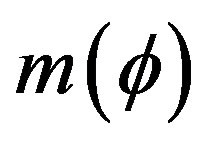 is formula Language, which value is a subset of a collection of objects in information sheet.
is formula Language, which value is a subset of a collection of objects in information sheet. 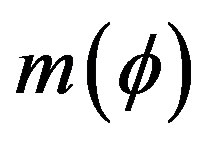 is the object of all which has the character of formula
is the object of all which has the character of formula .
.
Using  indicates the language which was defined by attribute subset
indicates the language which was defined by attribute subset . Considering the attribute subset
. Considering the attribute subset  and the corresponding language
and the corresponding language , it can be defined the set of formal definitions are as follows.
, it can be defined the set of formal definitions are as follows.
Definition 1: In decision-making system , only if there is a formula
, only if there is a formula  in the language
in the language 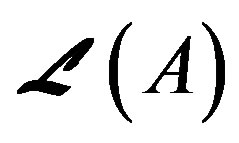 allows
allows 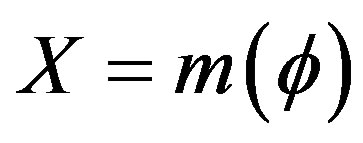 , the sub-set
, the sub-set  can be defined by the attributed subset
can be defined by the attributed subset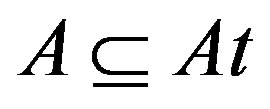 , Otherwise, it was not defined. Definable set of all expressed as:
, Otherwise, it was not defined. Definable set of all expressed as:
 (2)
(2)
Definition 2: If the two objects in the language 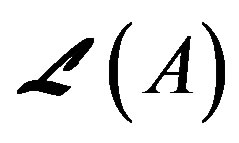 described by the same formula, or their individual property values on A are the same, claiming that the two objects are equivalent.
described by the same formula, or their individual property values on A are the same, claiming that the two objects are equivalent.
Definition 3: Let 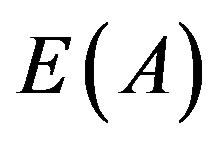 be an equivalence relation on
be an equivalence relation on ,
, 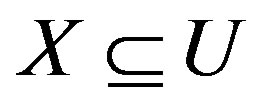 , the upper and lower approximation operators
, the upper and lower approximation operators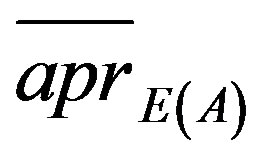 ,
, 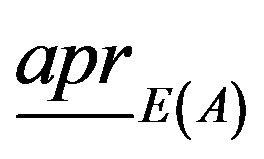 is defined as:
is defined as:
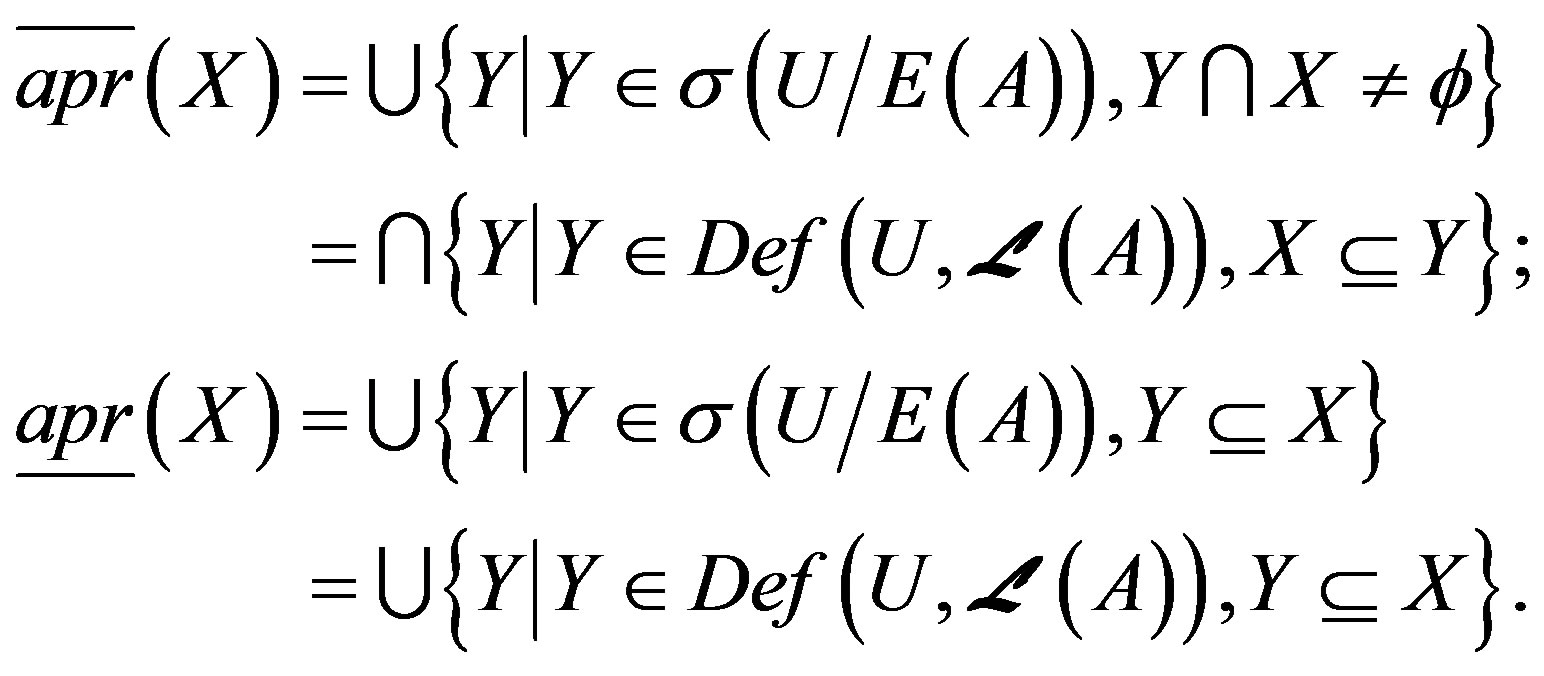 (3)
(3)
On the approximation of  is the least definable set containing
is the least definable set containing ,
, 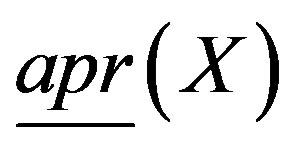 is included under the approximation of the maximum can be defined in the
is included under the approximation of the maximum can be defined in the  set.
set.
Definition 4: Consider the subset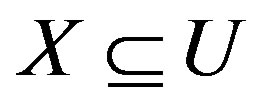 , the domain space will be divided into three areas:
, the domain space will be divided into three areas:
1) Positive region of set :
: ;
;
2) Negative region of set :
:
 ;
;
3) Boundary region of set :
:
 .
.
If 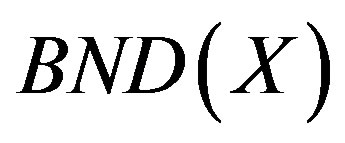 is the empty set, we called set
is the empty set, we called set  about relationship
about relationship 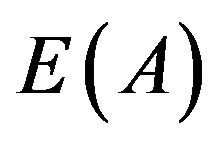 is clear (crisp); the other hand, if
is clear (crisp); the other hand, if 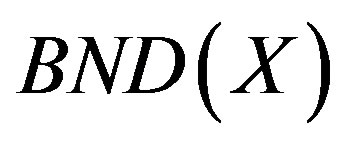 is not an empty set, we called set
is not an empty set, we called set  about relationship
about relationship  is rough.
is rough.
3.2. Model
Supposed  as the to be evaluated environmental factors, if there are number
as the to be evaluated environmental factors, if there are number  factors in the
factors in the  layer, then the environmental factors can be expressed as:
layer, then the environmental factors can be expressed as:  , the evaluation satisfaction of environmental factors was expressed by
, the evaluation satisfaction of environmental factors was expressed by . To construct a definition of rough set decision as table M. To constitute the object of different combinations of demand for U, E indicated condition attributes,
. To construct a definition of rough set decision as table M. To constitute the object of different combinations of demand for U, E indicated condition attributes, 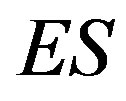 indicated decision attribute. The investigated results of the related personnel is the attribute values, the environmental factors attributes set which to be evaluated was expressed by
indicated decision attribute. The investigated results of the related personnel is the attribute values, the environmental factors attributes set which to be evaluated was expressed by , the survey satisfaction attribute set was expressed by
, the survey satisfaction attribute set was expressed by .
.
By calculating the area A is whether equal to B to determine the environmental factors can reduce or not. If
 , this shows that
, this shows that 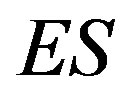 relative to
relative to
 can be reduced .If not, then it is on the contrary.
can be reduced .If not, then it is on the contrary.
Using 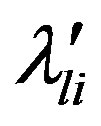 indicated the same node evaluation results in
indicated the same node evaluation results in  layer with the environmental factor
layer with the environmental factor 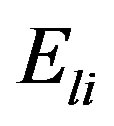 which was located in layer
which was located in layer  number
number . The green environment for technology innovation evaluation model can be expressed as
. The green environment for technology innovation evaluation model can be expressed as
 (5)
(5)
Using 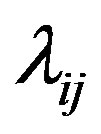 indicated the evaluation results of the environmental factor
indicated the evaluation results of the environmental factor 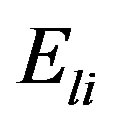 which was located in layer
which was located in layer  number
number , then
, then 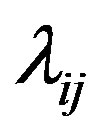 was equal to
was equal to 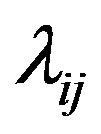 which multiplied with the evaluation results of all the parent nodes in this environmental factor.
which multiplied with the evaluation results of all the parent nodes in this environmental factor.
4. Empirical Research
As an enterprise for the study which selected 20 employees of the enterprise survey who involved in management, technology development and front-line workers.
According to the evaluation index system proposed by the above, the first layer of environmental factors to be evaluated of the enterprise external environment  = [external cultural environment (
= [external cultural environment ( ), policies and systems environment
), policies and systems environment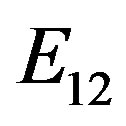 , external resources and environment (
, external resources and environment ( )]. Using 1, 3 and 5 indicated the staff satisfaction with the environment which was to be evaluated. The decision table which constituted with the survey results about the first layer was shown in Table 2.
)]. Using 1, 3 and 5 indicated the staff satisfaction with the environment which was to be evaluated. The decision table which constituted with the survey results about the first layer was shown in Table 2.
The relative positive domain which calculated according to Table 1 determined the various external environmental factors in relation to employee satisfaction whether reduction in the first layer.
The relative positive region 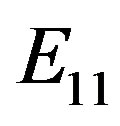 is:
is:
 (6)
(6)
The relative positive region  is:
is:
 (7)
(7)
The relative positive region 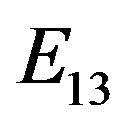 is:
is:
 (8)
(8)
Because ;
;  ;
; , the external environment
, the external environment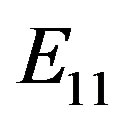 ,
, 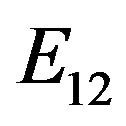 ,
, 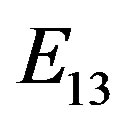 in the first layer of the enterprises green technology innovation as to the satisfaction
in the first layer of the enterprises green technology innovation as to the satisfaction 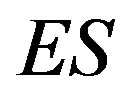 can not reduce. It also means that the three factors in the first external environment layer can not be ignored.
can not reduce. It also means that the three factors in the first external environment layer can not be ignored.
It can be calculated the first layer external environment evaluation results by the formula (5).
The evaluation results of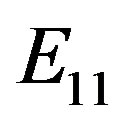 ,
, 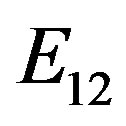 and
and 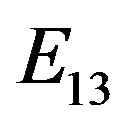 is:
is:
 (9)
(9)
 (10)
(10)
 (11)
(11)
According to the calculation results can be seen:  .
.
Using the same method to calculate the internal evaluation results of the business green technology innovation environment.The first layer of environmental factors to be evaluated of the enterprise internal environment  = [internal cultural environment (
= [internal cultural environment (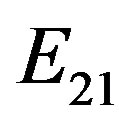 ), internal institutional environment (
), internal institutional environment (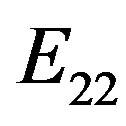 ), internal resources environment (
), internal resources environment ( )]. The decision table which constituted with the survey results about the second layer was shown in Table 3.
)]. The decision table which constituted with the survey results about the second layer was shown in Table 3.
The relative positive domain which calculated according to Table 3 determined the various internal environmental factors in relation to employee satisfaction whether reduction in the first layer.
The relative positive region 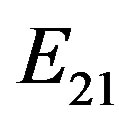 is:
is:
 (12)
(12)
The relative positive region  is:
is:
 (13)
(13)
The relative positive region 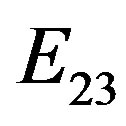 is:
is:
 (14)
(14)
Because ;
;  ;
; , the internal environment
, the internal environment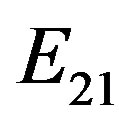 ,
, 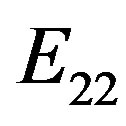 and
and 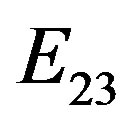 in the first layer of the enterprises green technology innovation as to the satisfaction
in the first layer of the enterprises green technology innovation as to the satisfaction 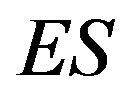 can not reduce. It also means that the three factors in the first internal environment layer can not be ignored.
can not reduce. It also means that the three factors in the first internal environment layer can not be ignored.
It can be calculated the first layer internal environment evaluation results by the formula (5).
The evaluation results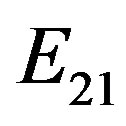 ,
, 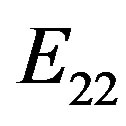 and
and  is:
is:
 (15)
(15)
 (16)
(16)
 (17)
(17)
The final evaluation result was calculated by the survey of 20 employees that was shown in Table 4.
The weight of the first layer environmental indicators set by the evaluation team. Let the set of weights is  . Value of each weight is:
. Value of each weight is:
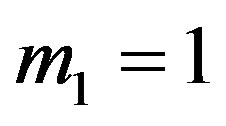 ,
, 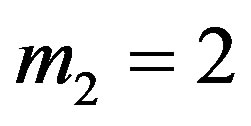 ,
, 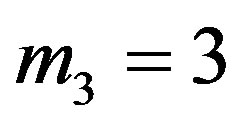 ,
,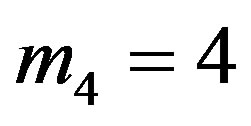 . Corresponding set of weights is
. Corresponding set of weights is  = {Not important, general important,
= {Not important, general important,

Table 2. The first layer external environment evaluation decision table.
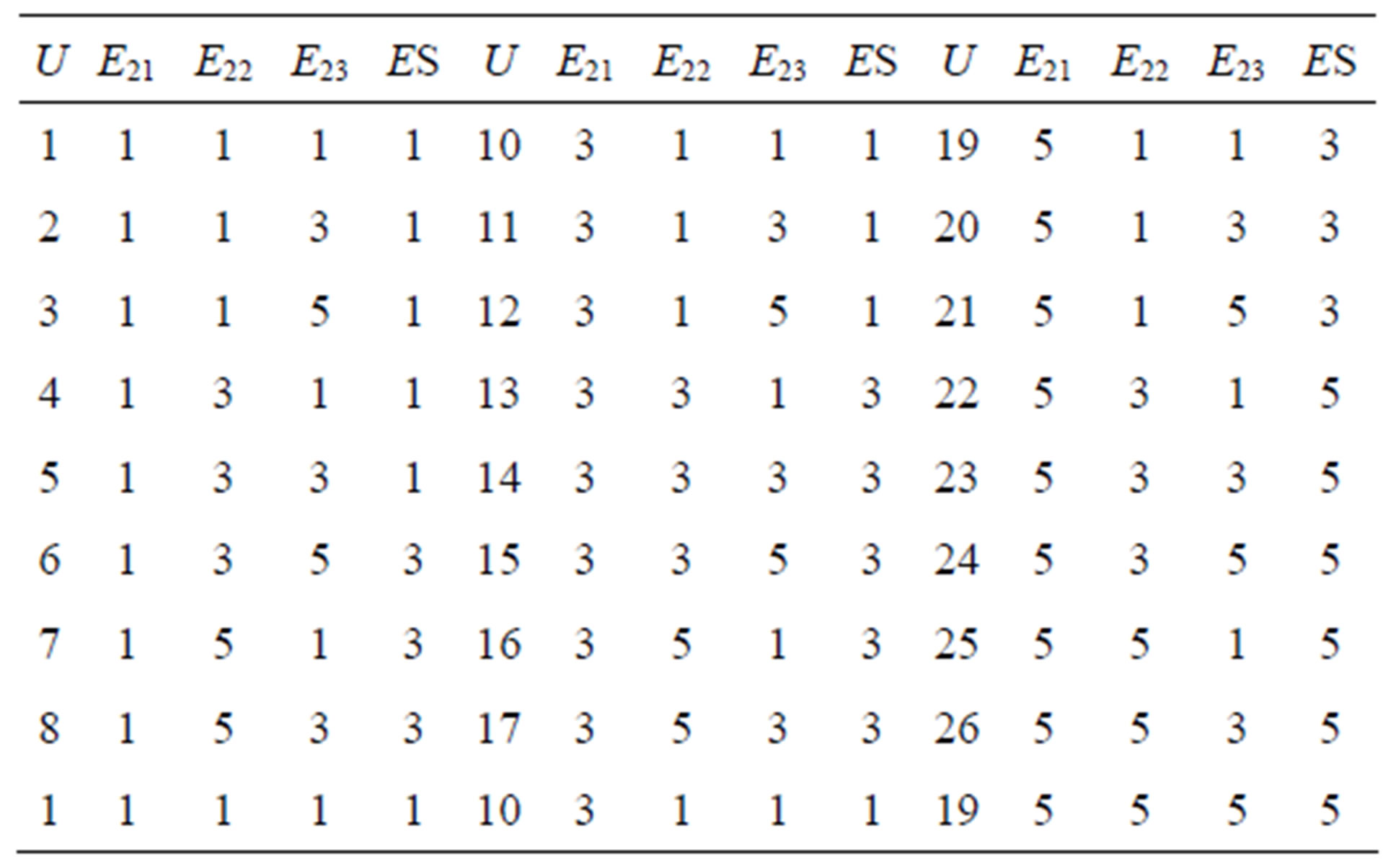
Table 3. The second layer external environment evaluation decision table.

Table 4. The environment index evaluation calculated results of first layer.
more important, very important}, Let the set of evaluation is , Value of each weight is:
, Value of each weight is: 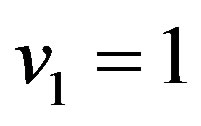 ,
,  ,
, 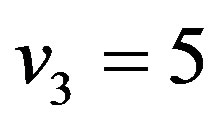 ,
, 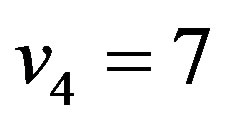 ,
, 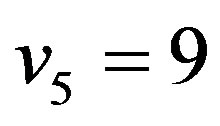 , Corresponding set of evaluation is
, Corresponding set of evaluation is . The final results of the evaluation of environmental indicators for the first layer is
. The final results of the evaluation of environmental indicators for the first layer is
 (18)
(18)
The calculatedion only for the first layer with the Enterprise evaluation index system of green technology innovation, but the second layer is similar to the calculation results of the evaluation. The end result in the second layer is equal to the second level evaluation of the environmental factors to be calculated with a layer of environmental factors corresponding to the calculated value of the product. The final results of the evaluation index are shown in Table 5.
By the formula (5), the evaluation range of environmental factors results is . The better the enviromental factors the greater
. The better the enviromental factors the greater ’s value, on the contrary,
’s value, on the contrary, ’s value is smaller, the worse the environmental factors. As can be seen from Table 4, the enterprise whether internal or external environment, there are many areas that need improvement. For example, the external environment should strive for better financial support policies. In the internal environment, although the management of enterprises to implement green technology innovation to give a high degree of attention, but the funding for green technology innovation inputs to be further improved. Meanwhile, enterprises should also strengthen the research and development with the external environment and improve the level of equipment and process improvements.
’s value is smaller, the worse the environmental factors. As can be seen from Table 4, the enterprise whether internal or external environment, there are many areas that need improvement. For example, the external environment should strive for better financial support policies. In the internal environment, although the management of enterprises to implement green technology innovation to give a high degree of attention, but the funding for green technology innovation inputs to be further improved. Meanwhile, enterprises should also strengthen the research and development with the external environment and improve the level of equipment and process improvements.
5. Conclusions
The article establishes the business green technology innovation with the internal and external environment indicators, and establishes a rough set theory based on evaluation model. By the above theories, this paper can get the following conclusions and inspiration.
The enterprise evaluation index system of green technology innovation which is established by the paper involves with various aspects of the business internal and

Table 5. The evaluation calculation results of enterprise green technology innovation environment index.
external environment, it can provide a good environment theoretical basis in the implementation process of green technology innovation. However, the establishment of the enterprise evaluation index system of green technology innovation is a complex system which needs to continue to practice and improve.
The evaluation model which is based on the rough set theory overcomes the traditional rough set model cumbersome bottleneck. At the same time, the model does not require any other prior knowledge, evaluation result depends entirely on the results of the survey, so the environment evaluation of green technology innovation is more objective. The empirical studies show that the established evaluation model has good operability and effectiveness.
Good enterprise environment has a profound impact and role in promoting the green technology innovation. In turn, the successful green technological innovation can contribute to the healthy development of the enterprise environment. The green technology innovation and business environment should be compatible and harmonious development.
6. Acknowledgements
This research was supported in part by the project of Tech-innovation Methods Integration Research and Generalizing Application (NO. 2007FY140400) and the Project Supported by Sichuan Circulation Economic Research Center (NO xhjj-1013).
REFERENCES
- Z. R. Hu, “Green Tech Innovation and Enterprise’s Sustainable Development,” Technological Development of Enterprise, Vol. 25, No. 11, 2006, pp. 92-94.
- V. Norberg and B. Stimulating, “Green Technological Innovation: An Analysis of Alternative Policy Mechanisms,” Policy Sciences, Vol. 32, No. 1, 1999, pp. 15-58.
- Y. S. Chen, “The Influence of Green Innovation Performance on Corporate Advantage in Taiwan,” Journal of Business Ethics, Vol. 67, No. 4, 2006, pp. 551-559. doi:10.1007/s10551-006-9025-5
- S. C. Yu, “Driver of Green Innovation and Green Image—Green Core Competence,” Journal of Business Ethics, Vol. 81, No. 3, 2008, pp. 531-543. doi:10.1007/s10551-007-9522-1
- P. Li, “Technology Innovation from Traditional to Green,” Social Sciences Shanghai China, Vol. 6, No. 12, 2011, pp. 11-14.
- Y. Ling, “Theory of Green Technology Innovation,” Science & Technology Progress and Policy, Vol. 17, No. 9, 2000, pp. 64-65.
- H. F. Yang, “Green Technology Innovation: Enterprise Development of Circular Economy Effective Power,” Seeker, Vol. 5, No. 9, 2005, pp. 35-36.
- J. JIAO and Y. Li, “Firm’s Green Strategic Orientation and Green Innovation Based on Alliance,” R&D Management, Vol. 23, No. 1, 2011, pp. 84-89.
- Q. H. Zhu and Q. Liu, “Green Innovation among Telecommunication Equipment Manufacturers—An Empirical Study on the Eco-Design Drive Model,” R&D Management, Vol. 25, No. 1, 2011, pp. 76-83.
- Y. Y. Zhu, Z. Q. Ma and Y. Q. Chen, “Multi-level Fuzzy Comprehensive Evaluation on Enterprise’s Green Technology Innovation Environment,” Science & Technology Progress and Policy, Vol. 27, No. 9, 2010, pp. 102-105.
- Z. Pawlak, “Rough set,” Communications of the ACM, Vol. 38, No. 11, l995, pp. 89-95.
- T. L. Satty, “The Analytical Hierarchy Process,” McGraw-Hill, New York, 1980.
- L Zadeh, “Fuzzy Sets as a Basis for a Theory of Possibility,” Fuzzy Sets and Systems, Vol. 1, No. 1, 1978, pp. 3- 28.
- A. P. Dempster, “Upper and Lower Probabilities Induced by a Multivalued Mapping,” The Annals of Mathematical Statistics, Vol. 38, No. 2, 1967, pp. 325-339. doi:10.1214/aoms/1177698950
- P. Zhao and H. W. Su, “Evaluation of Technical Innovation Environment in Chinese Enterprises,” Technology and Innovation Management, Vol. 29, No. 2, 2008, pp. 116-120.

